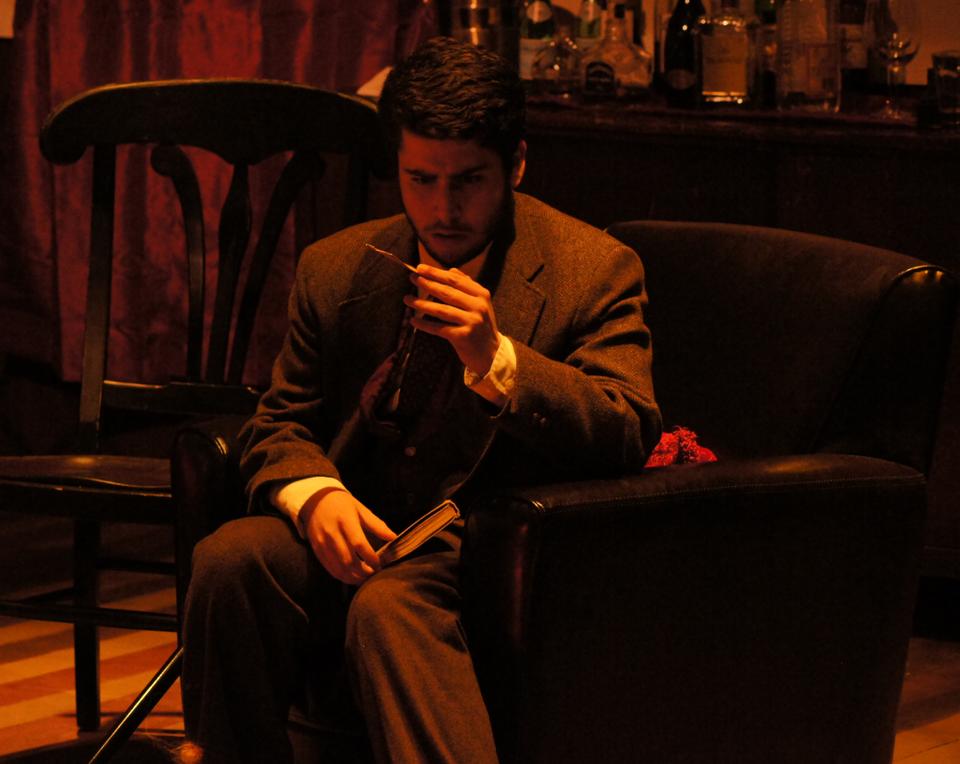
News
Cambridge Residents Slam Council Proposal to Delay Bike Lane Construction

News
‘Gender-Affirming Slay Fest’: Harvard College QSA Hosts Annual Queer Prom

News
‘Not Being Nerds’: Harvard Students Dance to Tinashe at Yardfest

News
Wrongful Death Trial Against CAMHS Employee Over 2015 Student Suicide To Begin Tuesday

News
Cornel West, Harvard Affiliates Call for University to Divest from ‘Israeli Apartheid’ at Rally
'Rope' Tied Up by Script
Well-executed production stumbles over Hamilton's unwieldy script

It’s frustrating when the artistic merits of a piece are secondary to the type of language used to express it. This sense of dissatisfaction applies to the Harvard-Radcliffe Dramatic Club’s production of Patrick Hamilton’s “Rope.” However, something simple and quiet lies at the edge of this production, directed by Sarah M. Batista-Pereira ’13 and finishing its run Feb. 16 to 18 at the Loeb Ex. The beauty of Pereira’s “Rope,” even as it stumbles occasionally over an imperfect script and imprecise pacing, lies in its ability to express deeper themes without drowning in the overwrought dialogue. The production’s strenghs are only allowed to shine through when it is unhindered by Hamilton’s original script.
“Rope” is probably most famous for having inspired the eponymous Hitchcock film, which is in fact very different from Hamilton’s 1929 play. The comedy is a dark one. It is a dramatic re-envisioning of the Leopold and Loeb murder of 1924, in which two brilliant young men, obsessed with the philosophy of Friedrich Nietzsche, attempts to prove their superiority by committing the perfect crime: the murder of Loeb’s cousin Bobby Franks. Wyndham Brandon (Nathan O. Hilgartner ’14) and Charles “Granno” Granillo (Eduardo J. Perez-Torres ’12), two university undergraduates and lovers, murder fellow student Ronald Kentley and stuff his body into a chest. In appropriately grisly, if not hospitable, spirit, the murderers then invite the victim’s friends Leila (Virginia R. Marshall ’15) and Raglan (Jeremy Y. Venook ’15) as well as Kentley’s father (Taylor A. Cressler ’14), for a seemingly normal dinner party—directly over the dead man’s body. It’s surprisingly cheery stuff until the quiet intellectual Rupert (Jacob A. Brandt ’14) begins to unravel Brandon and Granillo’s carefully laid plans.
Granillo is forever melancholic, and Perez-Torres’ performance is true to that character and admirably consistent. But—and this is really a structural problem—Granillo’s complicity in the murder does not line up with his introverted, regretful character, who acts as a foil to his partner’s domineering and vociferating personality. How this sense of conflict is expressed does not make sense given the setting of the production. For example, during the dinner, Granillo’s dark, introverted exclamations while he plays piano only intrude on the party without adding anything in particular to the performance or the development of his character.
To be fair, the book itself struggles most with the amount of conflicting energies present onstage at any moment: Brandon’s outbursts—again a problem with the script, not the production—are excessive, and the friends Leila and Raglan’s beautiful yet useless prating weaken the farce inherent in the show. The dialogue seems deliberately superficial, with more exuberant gesturing than necessary. The unfortunate result is that the nuanced performances lose their impact as they get lost in the overly wordy script.
The maid Sabot (Nancyrose Houston ’15) who lurks in the background is a brilliant model and moderator of tempo and tone. It’s more to Houston’s credit than Hamilton’s, probably: her character was onstage far less than the exemplary acting demanded. Nevertheless, her single exchange with Brandt, played by both actors with engrossing restraint, provides some of the play’s most genuine and provocative dialogue. Questions of unspoken pathos begin to take focus, however, Hamilton’s script seems not to have bothered answering these questions, which end up, unfortunately, becoming anomalous and superfluous.
The cast and crew of “Rope” work their most stunning theatrical artistry when they move beyond Hamilton’s script. Set Designer Jessica X. Zuo ’13 transforms a bland set by her attention to details, such as the inscrutably anachronistic squiggles of white snaking over a fairly unimportant painting hanging on the wall. Lighting designer Hannah R. Phillips ’15 uses a hint of churchly light illuminating the coffin/chest in the dim opening scene. This one detail beautifully evokes the show’s symbolism of light and dark. All of these moments communicate more of the production’s central themes than the Hamilton’s book does. “Rope” works best when the actors are freed from the overwrought script. Wordless murmurs of aggression in the plod of Rupert’s cane as he begins to unearth the crime say more than Hamilton’s verbose dialogue. The production succeeds when these simple aesthetics are deliberately, but subtly, engaged.
Want to keep up with breaking news? Subscribe to our email newsletter.
